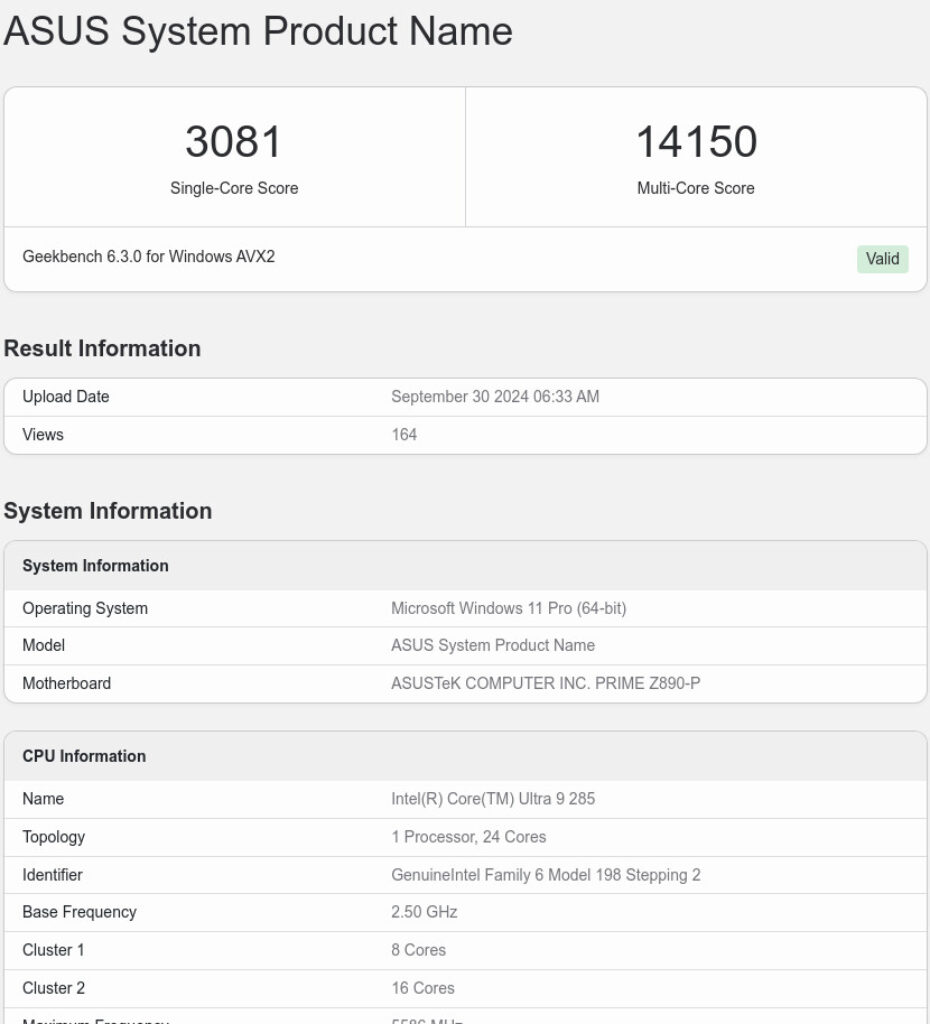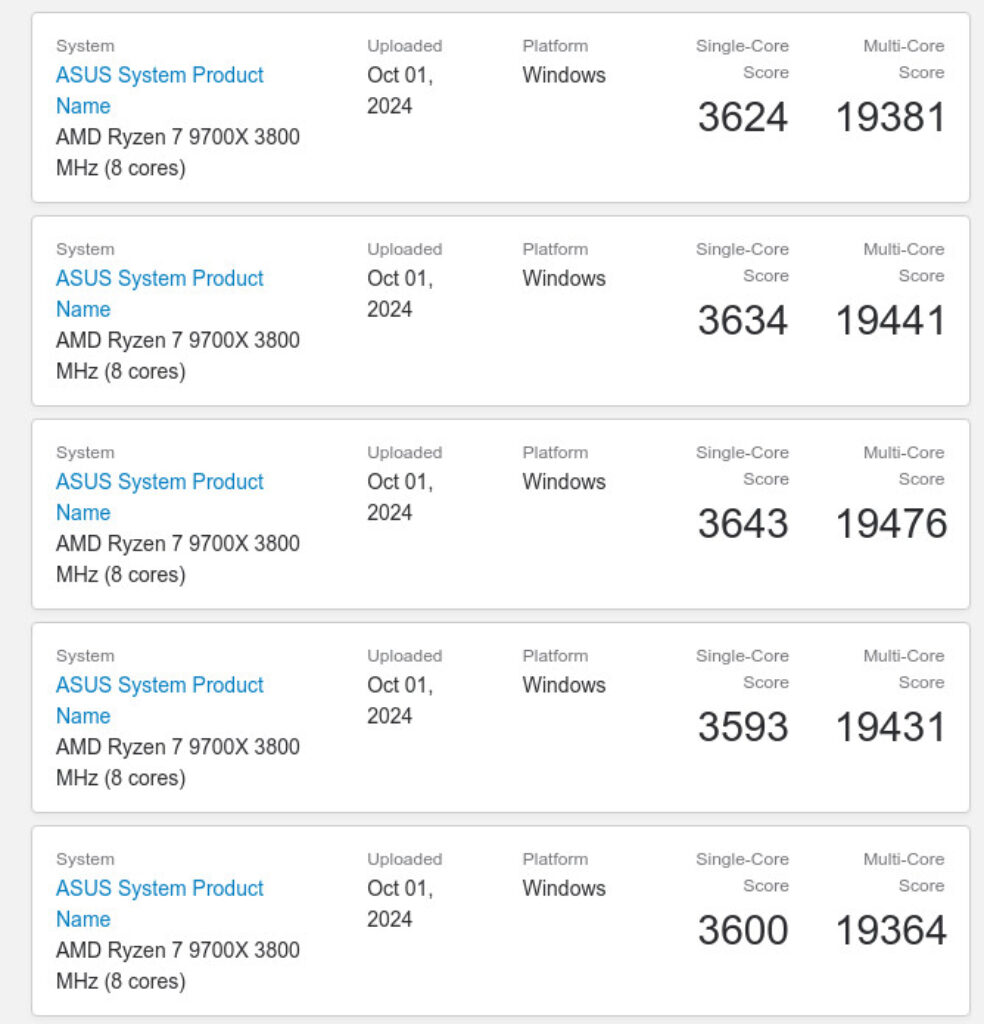Rumors surrounding Intel’s next-generation Arrow Lake desktop CPUs are gaining traction, with recent reports pointing to the Core Ultra 9 285K as the flagship model in the lineup. However, new Geekbench 6 scores, shared by BenchLeaks on X, have drawn attention to the performance of a non-K variant of the same chip—the Core Ultra 9 285. These results suggest that this version may not compete well with AMD’s Ryzen 9 series in multi-core performance.
According to the benchmark data, the Intel Core Ultra 9 285 was tested on an ASUS Prime Z890-P motherboard. The results indicated a multicore score of 14,150 and a single-core score of 3,081, which positions it below even AMD’s Ryzen 7 9700X, a previous-generation chip that registered scores of up to 19,381 in multicore and 3,624 in single-core performance on the same platform. These numbers fall well short of what many expect from Intel’s upcoming high-end desktop processor.
The test configuration appears to play a role in these subpar results. Unlike the Core Ultra 9 285K engineering samples that have scored over 21,000 in multicore tests, the 285 variant used in this test was equipped with only 8 GB of DDR5 RAM running at 5586 MT/s. This contrasts sharply with the K-SKU samples, which had up to 32 GB of DDR5 RAM operating at 5598 MT/s.


The performance gap between the two versions can also be attributed to significant differences in clock speeds. The E-cores of the Core Ultra 9 285 were running at a base frequency of 2.5 GHz, while the Core Ultra 9 285K’s E-cores were set at 3.7 GHz. This difference in base clocks likely contributed to the 285K’s superior performance in the Geekbench charts.
Despite these discrepancies, the benchmark results still provide insight into the hardware configuration of both the Core Ultra 9 285 and 285K chips. Both CPUs are expected to feature 8 performance cores (P-cores) and 16 efficiency cores (E-cores), for a total of 24 threads. The P-core boost clocks are anticipated to reach up to 5.586 GHz, though this frequency is likely limited to the performance cores.
While Geekbench is not typically considered heavily dependent on RAM configuration, the limited memory in the Ultra 9 285 test system may have skewed the results. It is possible that future benchmarks conducted with a more optimized setup will show more competitive performance, particularly as Intel’s Arrow Lake platform edges closer to release.
In conclusion, while the Core Ultra 9 285K appears to outperform its non-K counterpart by a considerable margin in early tests, questions remain about the exact performance capabilities of Intel’s new lineup. The results thus far highlight the importance of testing configurations and point to the possibility of much stronger results as more benchmarks emerge.
Sources: BenchLeaks, Geekbench browser, Geekbench 6 documentation (PDF)







